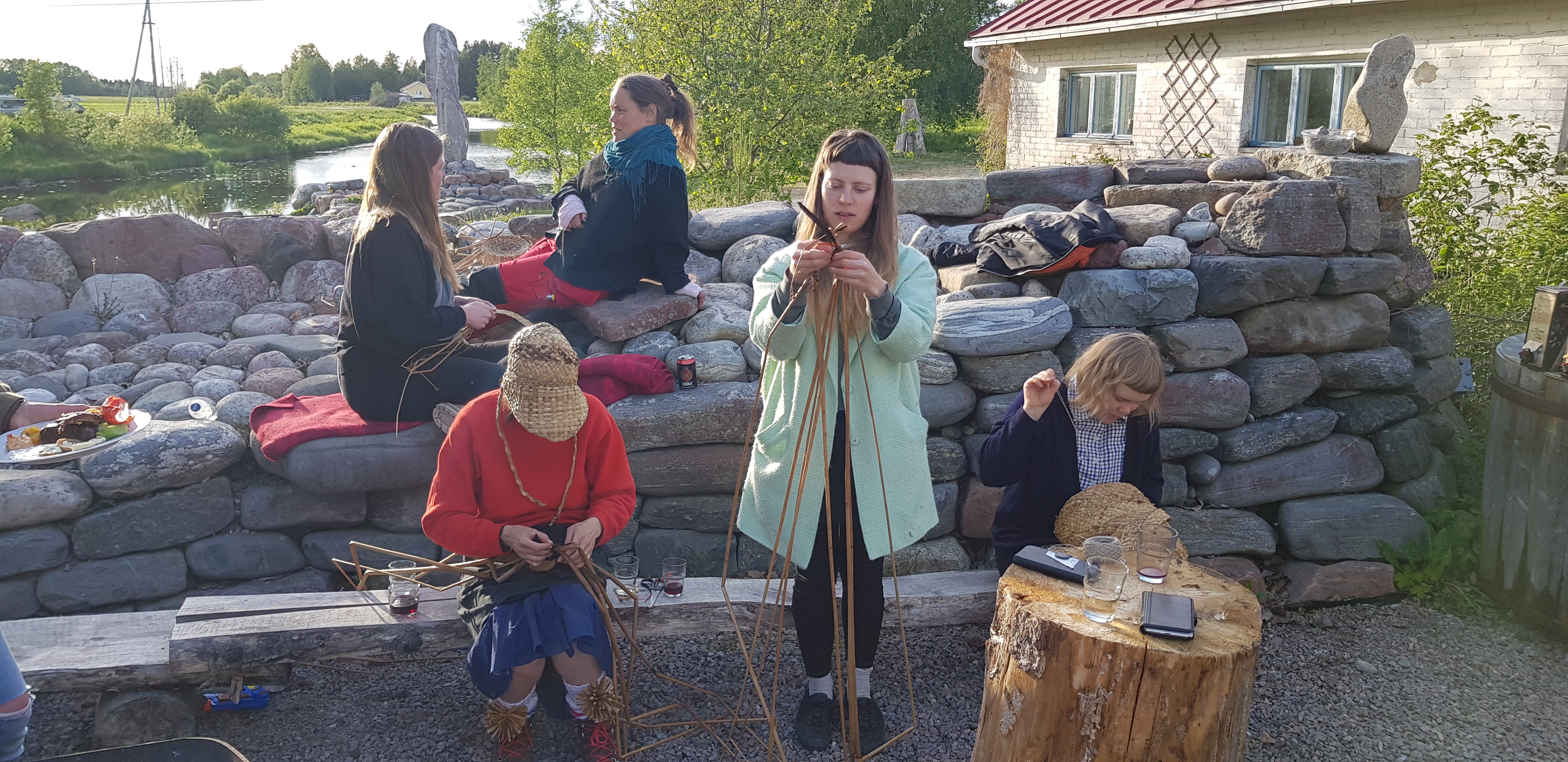
To create / make something has a lot in common with the ability to survive: both substantiate the appetites that drive living. This dual-pronged desire propels the HUNGER concept. A striving energy that fulfills not only the basic need to eat, but also a longing for something, or someone, outside of oneself – a broader survival. To search for new knowledge and new impressions. Hunger as both a necessity and longing. It is our approach. Project HUNGER is a way to describe the increased interest for the handmade object and the material, in our contemporary art scene and in our daily lives. A hunger to deepen knowledge (the material) and for exploring the new. Our method is to focus on research through materials that are unfamiliar, and to (re)approach our conceptions of the possibilities of (re)thinking with and working through what is familiar.
To focus this lens, we convened three workshops aiming to research a site specific craft technique and a raw material, focusing on a different material and practice each time. We brought together nine Nordic artists, whose common interest in sharing knowledge and exploring materials differently drove the content. During these workshops we experimented with different techniques and (ways to) exchange thoughts and knowledge.
To articulate and share internalized knowledges, acquired through years of artistic and crafts practice, is not an easy challenge. Only a couple of the artists had prior knowledge with the material and the craft to which they were exposed. The HUNGER artists are an open-minded assembly, their project presupposed that the artists would be willing to join a collective understanding of how to share artistic knowledge and their creativity (including craft, artistic practice and working methods). The participants fostered this by partaking in each other’s working processes.
This allows us a new pathway to develop and present works of contemporary craft from the Nordic region, as carriers of cultural values and strategies for creativity. It further leads us to ask: What does it mean to have material knowledge? What shapes and informs awareness, and the communicability of our appetites? In foregrounding the participants’ drive for adaptation, we prefaced unfamiliar surfaces, concentrating the sites where their materials transform and are ennobled. Transformed into a personal understanding and expression, whose reach is broader that any one individual’s grasp. Kind of “switchover,” a passing along. These meeting places were a condition of possibility for cross-fertilization. There is at present few meeting places between contemporary craft artists and masters of traditional crafts in our region, which we sought to remedy, even if only temporarily.
We explored how a craft can contain traces of both place and people. We were keen to find local experts who could become “conduits” and promoters of the project’s ambitions. The craft profession is connected to a number of different professions: we worked with a geologist, biologist, chef, and local craftspeople, to name a few. This is how many arts and crafts professionals work: we seek and give back professional expertise from people working with different disciplines.
Fallow periods were purposely built into Project HUNGER’s timeline to habituate self-reflection. During the intervals between each workshop, the artists exchanged knowledge, given a pause to reflect and react privately, to consider differently than they did in the immediate interaction with the material and the rest of the group on the workshop site. The first workshop was spent getting to know each other:and by the second and the third workshops we were meeting with old friends. Leading to approaches free from limitations, and the artists experienced an immediate and freeing work process – that they ranked as the most important project outcome.
The project period’s trace is documented by the exhibition HUNGER, produced in collaboration with The Norwegian Association for Arts and Crafts and Trøndelag Center for Contemporary Art. It displays work samples, field documentation and artwork from Project HUNGER. Part of the exhibition space is staged as a research/work area, with several contributing artists’ talks, and demonstrations where some of the artists show their working processes. It further facilitates a space for the artists to interpret their shared concept of HUNGER, and subsequently numerous new interconnections and outcomes for the exhibition, that would not have otherwise coalesced. Curator: Toril Redalen. Project manager: Siri Skjerve. On view: 1 December 2018-20 January 2019.
The invited artists:
Finland:
Mia Damberg www.miadamberg.com
Pauliina Pöllänen www.pauliinapollanen.net
Riitta Ikonen www.riittaikonen.com
Sweden:
Åsa Maria Hedberg www.asamariahedberg.se
Anna Nordström www.nnnrdstrm.com
Norway:
Edith Lundebrekke www.edith.no
Ingrid Becker www.ingridbecker.no
Tovelise Røkke-Olsen www.tlro.no
Pia Antonsen Rognes www.piaarognes.com
The project was managed by NORSKE KUNSTHÅNDVERKERE MIDT-NORGE, Malakta arranged together with Österbottens Hantverk rf the workshop on reeds (säv) in the summer 2018. Malakta Films documented the 3 workshops.
HUNGER is supported by Norsk Kulturfond, HANDMADE – Nordisk Kulturfond, TSSK, STFK og Norske Kunsthåndverkere, Svenska Kulturfonden och Kulturfonden för Finland-Norge.

